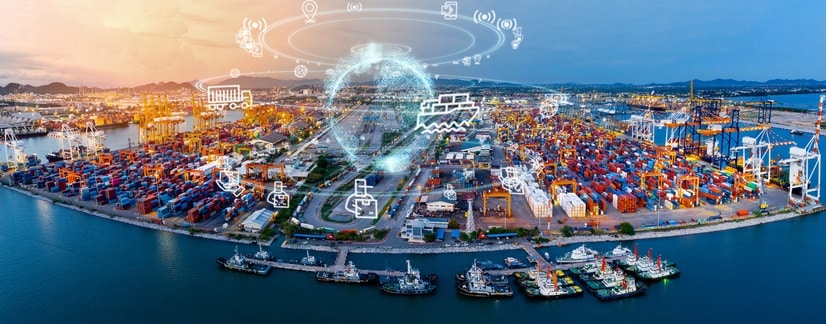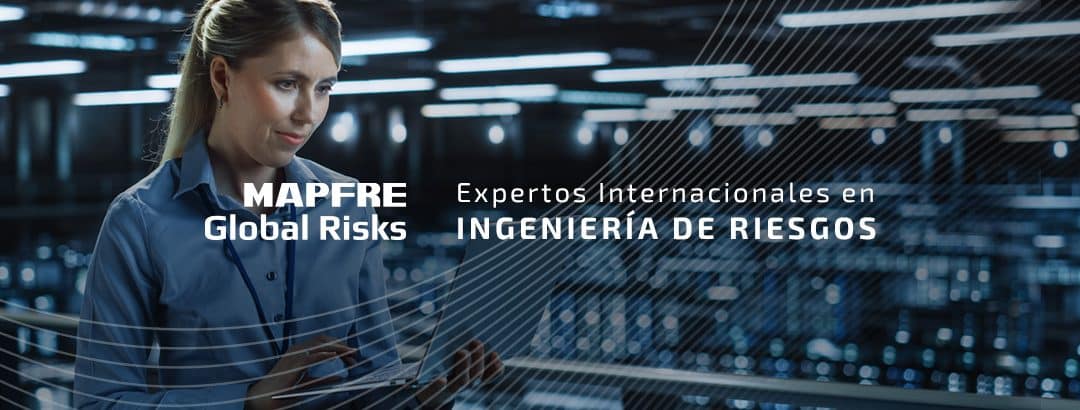Cristina Leon Vera | 30/04/2024
Artificial Intelligence is transforming maritime trade by supporting the optimization of logistics routes and environmental resources. To reach its full potential, it is essential that its technology be integrated with that of others and properly train industry professionals.
In the digital age, Artificial Intelligence (AI) has emerged as a powerful ally for the logistics sector, revolutionizing the way major commercial suppliers operate. Knowing the challenges of implementation is critical to its success. We talked them through with Genís Majoral, a Civil Engineer specializing in transportation and urban planning at the Polytechnic University of Catalonia (UPC).
“This technological integration in the shipping industry is already being used in different areas,” the expert said. Among the uses that stand out are those aimed at optimizing sea routes and predicting cargo volume thanks to the anticipated calculation of global supply and demand, which allows for operating costs to be minimized and delivery times to be reduced.
In addition to these targeted objectives, AI has among its plausible perspectives autonomous navigation and risk prevention, although they are currently carried out only partially and in harmony with other necessary technologies that make a real impact possible in the sector, such as 5G coverage, the Internet of Things (IoT) or Blockchain.
Positive impact of its implementation
For world trade, efficiency and sustainability are key elements, and advanced technology is an essential tool to address these challenges in maritime logistics. Majoral points out some of the main advantages of applying AI in the industry:
- Reduced environmental impact. AI allows fuel consumption to be optimized and freight and warehouse space consumption to be planned, significantly reducing the environmental footprint of passages. Risk prediction and accident prevention also prevent contamination resulting from spillage.
- Exploration of AI in strategic ports. Examples include Rotterdam, Los Angeles, Qingdao and Singapore, although all are still in the early stages. In Singapore, they are also incorporating natural language processing to streamline customs processes and reduce costs.
- Economic efficiency and optimization of sea routes. Technology gives logistics operators and carriers the opportunity to adjust their operations according to the cargo volume and number of vessels planned.
- Foster a collaborative logistics model. Making information flow between companies and customers—in addition to other key players in world trade—could favor synergy between international operators.
Technology Challenges to its Development
While some AI features are already in place in marine logistics, reaching their full potential is far from a reality, and one of the main challenges to achieving this is identifying which deployment lines can be seamlessly incorporated into the supply chain or make it more vulnerable to attacks.
“It requires a large investment in hardware and security systems that support the proper functioning of moving to a physical, labor-intensive system, to a virtualized technology system,” the expert warns.
The applicability of AI along with other technologies is also a considerable challenge, in order to create a system that prevents accidents and detects the vessel’s technical anomalies, for which it is necessary to deploy sensorization or visualization systems.
“Computer vision development, sensor reliability, network capacity to transmit all captured information, and compute capacity near where action occurs (edge computing) are all aspects that have to be developed at the same time as AI,” the researcher explains.
This technological integration in the shipping industry can be used passively to alert about an imminent collision, or proactively, initiating mechanisms to prevent it. In this latter context, AI and Machine Learning can significantly decrease the likelihood of an accident occurring.
An insurance breakthrough
“Unlike in the past, the present moment seems to contain the technologies that would make an industrial revolution possible. While algorithms and pilot cases have been in development for years, the inexorable future is the automation of any operation,” Majoral warns.
In order for this transformation to be feasible, one “necessary condition” must be met: a paradigm shift that does not alter the productivity and logistics of the industry. The volume of cargo, the agents involved and the impact on global development and well-being make it a complex and drastic change-resistant environment, although in small circles it can be adapted with some certainty.
In this context, the expert predicts that a fully automated industry is currently unimaginable, but that approaching that scenario will be possible when “technology demonstrates the same flexibility and adaptability in real time as humans, as well as the reliability and ruggedness of hardware (devices/sensors) in harsh environments.”
Despite the practical and technological challenges, there is a great deal of interest from ports, shipping companies and operators in this technological integration, which “in the short term, will act as an assistant for improving productivity. In the long-term, industry automation is possible,” he concludes.
Article Collaborator:
Genís Majoral is a civil engineer specializing in transportation and urban planning at the Polytechnic University of Catalonia (UPC).
He currently works as a researcher at CENIT, where he focuses on transportation modeling, demand and economics.
Furthermore, he is completing a PhD in Civil Engineering at UPC and a Master of Economic Research at UNED (Universidad Nacional de Educacion a Distancia [National University of Remote Education]).






